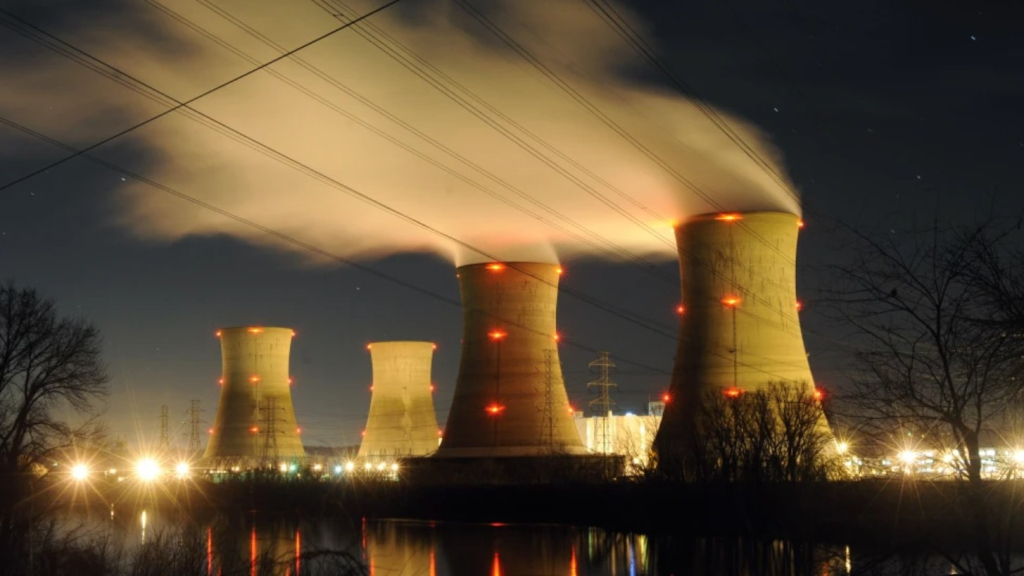
Ivan Maldonado | July 10, 2025
(RealClearWire) — Perhaps it’s too soon to mark nuclear power’s revival in the U.S. but there is a burst of activity that should ultimately yield a new generation of advanced nuclear plants and small modular reactors.
This is especially true for major industrial energy consumers – which now also includes data centers – where there is a strong economic incentive to use more nuclear power instead of natural gas and intermittent renewables.
In Illinois, Meta recently signed a long-term agreement to buy nuclear power from Constellation’s Clinton nuclear plant, the latest in a slew of deals between big tech and the nuclear industry. Constellation also said it would restart Three Mile Island Unit One in Pennsylvania and sell the power to Microsoft under a 20-year agreement. Google, too, has agreed to fund the development of small modular reactors, or SMRs, at three new nuclear sites in Oregon. TVA plans to build SMRs at its Clinch River site and Kairos Power has a blueprint for an advanced molten salt reactor. Moreover, Amazon, Google and Meta signed a pledge in March calling for nuclear energy worldwide to triple by 2050.
Elevating nuclear power on our list of energy options makes sense because it is the only way to generate large amounts of emission-free electricity reliably for AI-powered data centers, electric vehicles and industries. But surging demand for electricity and nuclear power underscores a serious issue: Who will provide the huge amounts of uranium needed to fuel nuclear plants?
Currently, 95% of the uranium used at US nuclear plants is imported from other countries, with Russia and former Soviet States flooding the global market and driving free-market companies out of business. China is also rapidly expanding its influence in the global uranium supply chain. But our dependence on uranium imports is not for lack of domestic resources.
In fact, in the mid-1970s the U.S. was the sole supplier of enriched uranium in the West, and business boomed. Since then, artificially low prices – and policy antagonism to domestic production – have forced U.S. customers into the hands of foreign competitors. Currently, there are only five uranium mines operating in the U.S. in contrast to several dozen in the 1970s and 20 as recently as 2009.
A uranium crisis may not be imminent, but the long-term implications of buying cheap foreign uranium instead of from US mining companies are ominous, particularly for national defense, including the Navy’s fleet of nuclear-powered aircraft carriers and nuclear submarines. Our nation’s fleet of 94 nuclear power plants also requires a dependable supply of uranium.
American industries, including our defense industrial base, are currently under immense pressure from China’s export restrictions on mineral exports – including rare earth metals. We know too well that the era of overreliance on mineral imports must come to an end. This is an economic, energy and national security vulnerability that has become untenable.
Given the risk of a cutoff of uranium imports or a huge spike in the price of uranium, we need a government policy to counter the threat to our national security and economy. President Trump recently said the Administration will draw up recommendations for reviving and expanding U.S. uranium production. That’s a good first step but we must match intent with action.
Our dependence on imported minerals, particularly from adversaries, poses a grave threat to national security. And it will cause serious trouble for key sectors of our economy if something isn’t done soon to boost domestic production. For these reasons, the U.S. now faces a monumental challenge: scaling up production of uranium, diversifying supply chains to protect national security and doing so in ways that are sustainable.
Dr. G. Ivan Maldonado is a professor in the Department of Nuclear Engineering at the University of Tennessee, Knoxville.
This article was originally published by RealClearEnergy and made available to WMAL via RealClearWire.




















